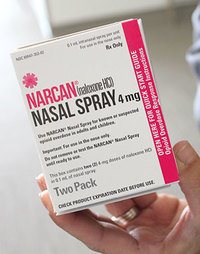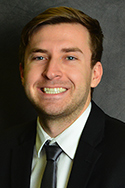Reversing the Opioid Crisis: Understanding Addiction to Save Lives in Otter Tail County
by Connor Sheridan
December 2023
The word "addiction" means something different to different people. With improving science over the past 20 years, researchers are now able to put addiction in two categories: either a behavior – like gambling – or a chemical, like nicotine or a narcotic. These things release a chemical called dopamine which makes a person feel good and causes the brain to crave either that behavior or chemical. Having an addiction also means that the behavior or chemical can do long-term damage to the brain and the rest of the body.
Addiction involves the brain, and the science shows that it does not matter if someone is a girl, boy, man, women, or grandparent. It affects people with black skin, brown skin, white skin, and tattooed skin. And it does not care whether someone lives in Minneapolis, or right here in Otter Tail County. Addiction can happen to anyone.
Opioids are a group of chemicals that have led to problems like addiction and overdose in Otter Tail County. They are the active substance found in some prescribed pain medications as well as drugs such as heroin. For anyone using these substances, it is important to know all the side effects. One of the more dangerous ones is that breathing can be slowed down. When breathing slows oxygen decreases, carbon dioxide rises and this is how opioid overdose causes death.
Opioid overdoses can be seen in people trying to control pain. Patients normally try to control pain with ibuprofen and acetaminophen, and both are commonly used over the counter pain medications. Sometimes this is not enough to control pain, and providers can move to stronger medications that are prescription-only. These can include the pain-killing opioid chemicals called oxycodone and hydrocodone. These medications can be necessary for patients who are in intense chronic pain and can allow them to live more comfortably.
For those who use opioids daily, their brain can get used to the medication. Using the same amount that used to be helpful may no longer prevent the pain. This can lead to increasing amounts being used and can result in the side effect of slowing breathing down. In addition to the breathing problems caused by too much opioid, other common signs of overdose are drowsiness, difficulty awakening, blue fingers or lips, slow pulse. Also, small pupils sometimes can be seen if the user's eyelids are lifted.

of naloxone.
While not everyone who uses too much of an opioid has these symptoms, anyone who has used too much can benefit from a nasal spray called naloxone. Naloxone is a widely available medication that is used nationally because it can stop, as well as reverse, the effects of a deadly opioid overdose. It is very safe and effective, so much so that the state of Minnesota and its Board of Pharmacy allows pharmacists to independently prescribe naloxone now to patients or people that are around individuals who use opioids, without needing to see a medical provider. Pharmacists will provide education on proper usage and provide the trainee with medication.
Some recent surprising information from the state's health department: In the five years leading up to 2021, opioid prescriptions written in Otter Tail County have decreased by nearly 40%. Despite this decrease, there has been an increase in opioid-related overdose deaths. This probably suggests that there is more to the problem than just the number of opioid prescriptions given by physicians. While experts are still trying to solve this problem, Otter Tail County citizens that know about opioid overdose signs, and have naloxone available after talking with their pharmacist, could save someone's life.
This article also appeared in the January 18, 2024 issue of the Pelican Rapids The Press.
About the Author
 Connor Sheridan is a third-year medical student
at the University of North Dakota School of Medicine &
Health Sciences. Along with his involvement in patient
care experiences offered in Pelican Rapids, Minnesota,
Connor chose to also participate in the Targeted Rural
Health Education program, or TRHE. The program focuses on
teaching student doctors the importance of rural
newspapers as a way to share health information with
rural community members. The information is not for
diagnosis or treatment and should not be used in place of
previous medical advice provided by a licensed
practitioner.
Connor Sheridan is a third-year medical student
at the University of North Dakota School of Medicine &
Health Sciences. Along with his involvement in patient
care experiences offered in Pelican Rapids, Minnesota,
Connor chose to also participate in the Targeted Rural
Health Education program, or TRHE. The program focuses on
teaching student doctors the importance of rural
newspapers as a way to share health information with
rural community members. The information is not for
diagnosis or treatment and should not be used in place of
previous medical advice provided by a licensed
practitioner.
